


George Partleton 1798-1831
George Partleton was born on 06 December 1798, the youngest son of Thomas Partleton and Margaret Lee.
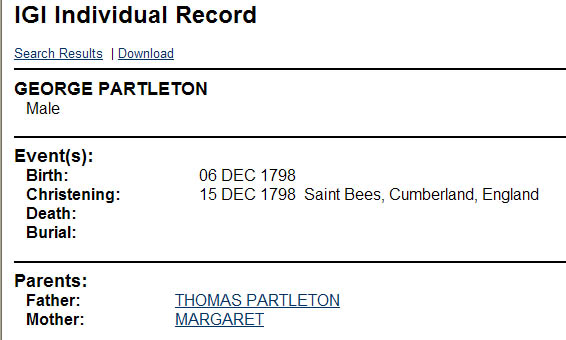
George and his 7 brothers and sisters were all born in the tiny village of Hensingham, a stone-quarrying area about a mile outside of Whitehaven, Cumberland.:

Cumberland is a county rich in natural resources. It encompasses the Lake District, arguably the most stunningly beautiful region of Britain. So before we turn our attention to George, let's have a quick look at the Lake District. If you haven't been, I'd recommend it:
Great How:
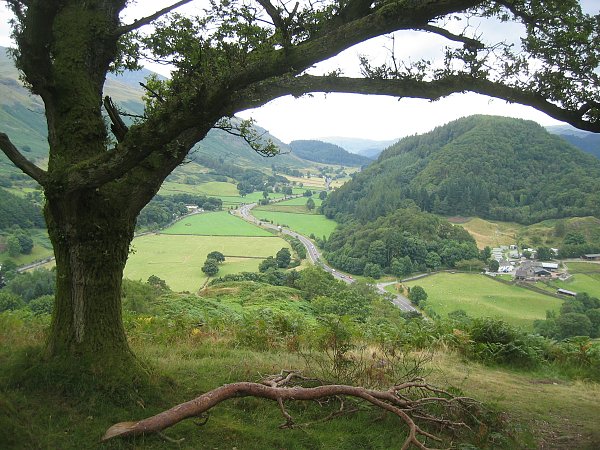
Keskadale Farm:
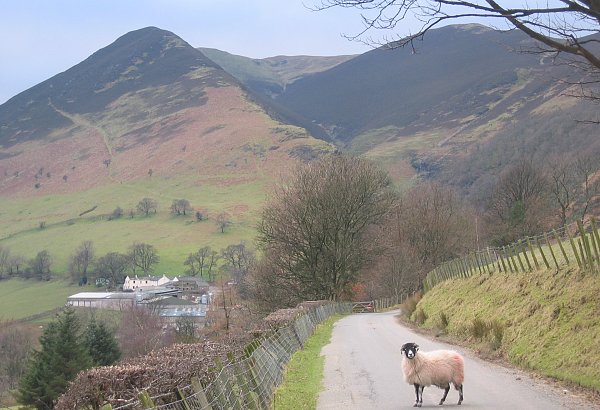
Ullswater:
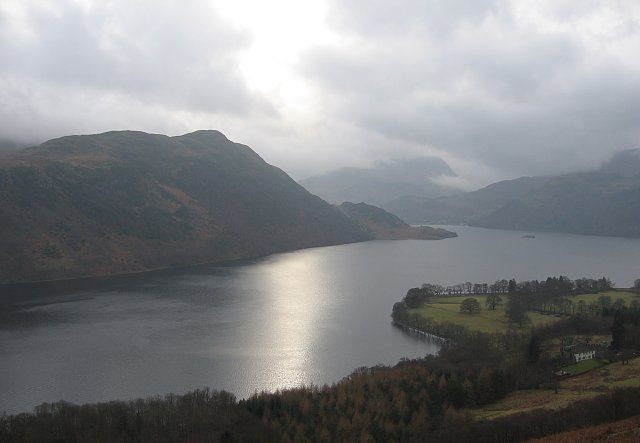
Crummock Water:

Buttermere:
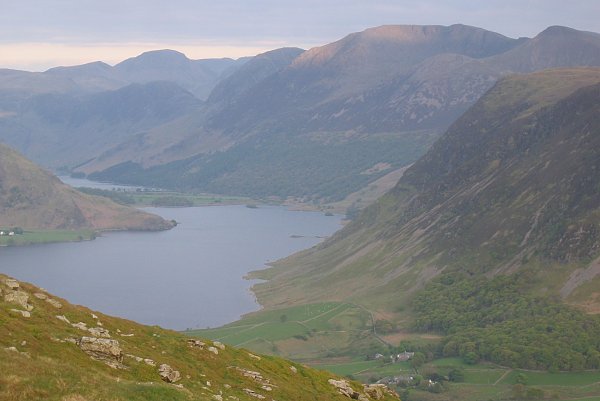
Anyhoo, that's enough pictures of the Lake District. Our George has probably hardly seen any of it. He's a coal miner in Whitehaven and we have got a picture of his house; it's one of the ones on the right:
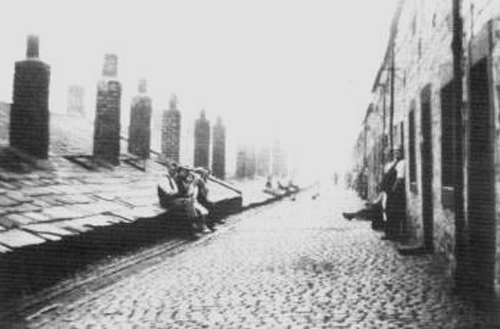
Oh dear. I thought you'd appreciate the contrast. More on this later.
On Sunday 28 May 1820, at age 21, George marries Jane Harrison:
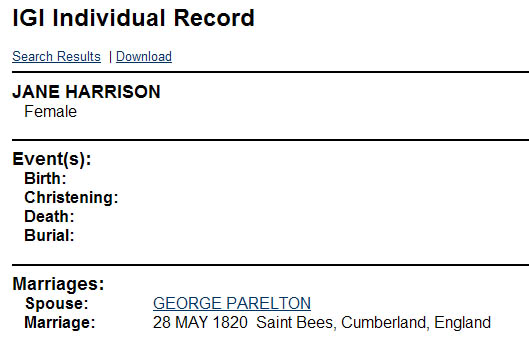
In 1821 George and Jane are living in Whitehaven and have their first son, Thomas, christened on 07 October 1821 at Holy Trinity Church:
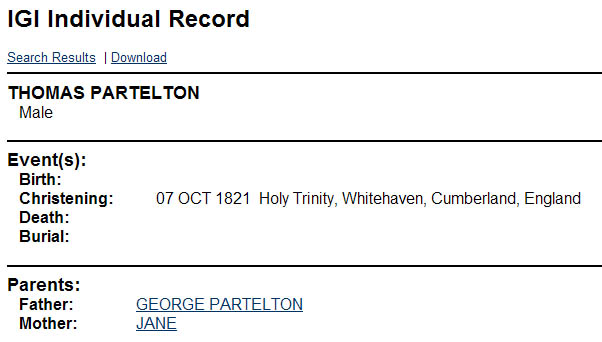

Holy Trinity Church was built in 1715 and demolished in 1949 due to being structurally unsound - subsidence, undermined by coal mines.
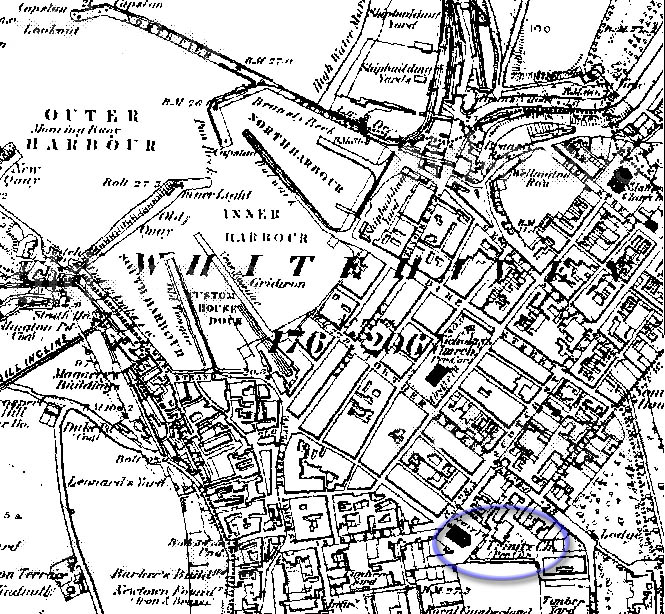
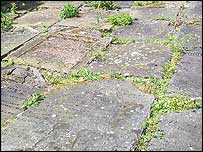
The gravestones were laid flat as paving (see inset above) and the area converted to a park.
In 1826 George and Jane have another child, whose name is undecipherable, and in on 10 February 1828, another boy, William, is christened at Holy Trinity. Finally, George and Jane have a daughter, Margaret, born in 1830. I say finally because there are not going to be any more children.
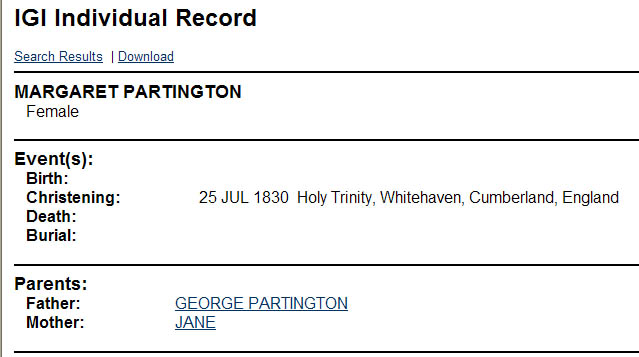
Above we note the spelling of Margaret as Partington, but it's definitely her, and we might as well get used to it because we are going see it again. George and his family seem not to worry too much about this.
George is working as a coal miner at the Croft Pit, which we see at the south of the map below. This map is a mile south of Whitehaven. George is living in Back Row, one of the "New Houses" circled on the map
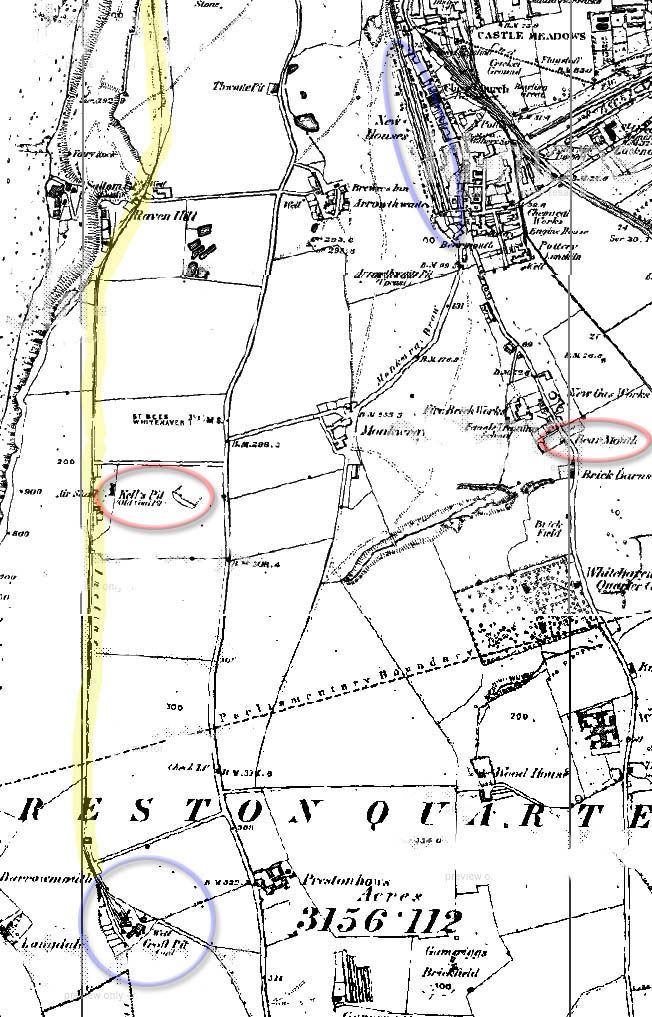
So let's have a closer look at the house where the family are living. The photograph below is Back Row; one of the houses we see on the right is the residence of George Partleton, Jane Harrison and their four little children. The rooves on the left with people sitting on them are Middle Row.
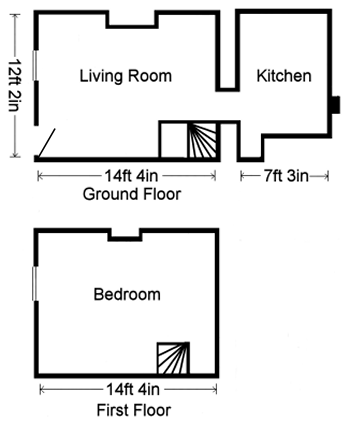

We get a stunning, graphic description of the living conditions in these exact houses from the The Whitehaven Gazette:

To get back to our George, when he's not in Back Row dumping ash and garbage on his neighbours' back kitchens, and we sincerely hope he's not exposing himself, he's working in Croft Pit. Below we see the railway terminating at the Croft and Ladysmith Pit, about a half mile from George's house.
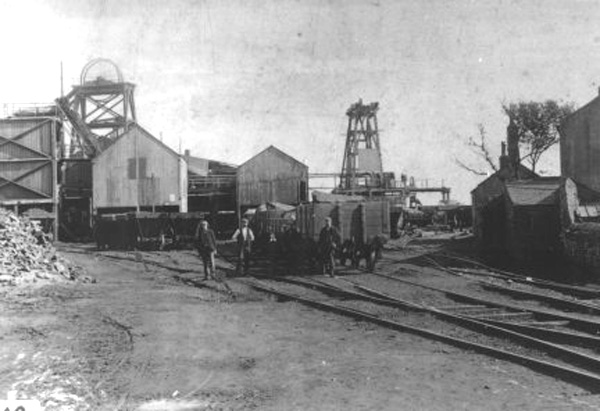
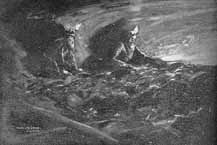
The next event we see is reported by the newspaper The Cumberland Paquet dated 22 November 1831:
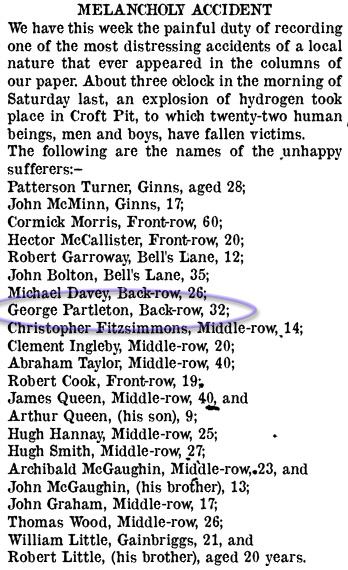
There is so much to say about this, I hardly know where to begin. The mine shaft at Croft Pit was about 80 yards deep. The explosion occurred between 1 to 2 miles inside the mine.
The Whitehaven Herald sent a reporter to the scene in November 1831:
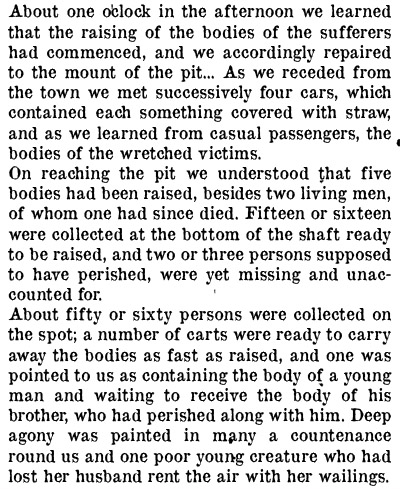
Of course, there had to be an inquest into these violent deaths, and this was to turn out to be extremely controversial. Several of the jury were in the employ of, or otherwise obligated to, the mine owner Lord Lonsdale (whose portrait we see below), and questions were asked of their suitability. Witnesses when called often appeared to be "manifestly drunk" and at least two were belligerent and impertinent to the coroner Peter Hodgson to the point of being thrown out.
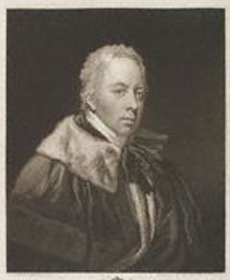 Left: Mine
owner William Lowther, 1st Earl of Lonsdale
Left: Mine
owner William Lowther, 1st Earl of Lonsdale
The jury of ordinary working men behaved admirably, rebelled against being bullied by the coroner Peter Hodgson, whose view was that the most likely cause was that one of the miners must have opened his Davy Safety Lamp in order to get more light, thereby igniting and exploding the methane gas.
All of the victims were burned in varying degrees. Some died instantly, others not. Witness Thomas Benson gave evidence about the fate of George Partleton:
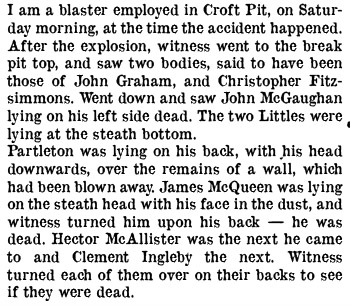
The outcome of the inquest was Accidental Death.
The Inquest gives us a further insight into George's place of residence. The jury actually had to visit the Partleton home to see George's body laid out. The distaste of the writer for this ordeal in not concealed:
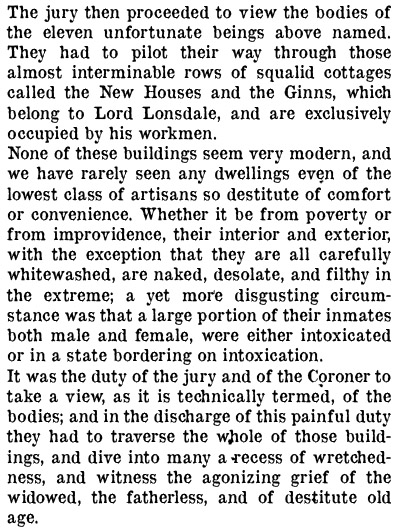
George Partleton was buried on 14 November 1831 at St Nicholas Church Whitehaven:
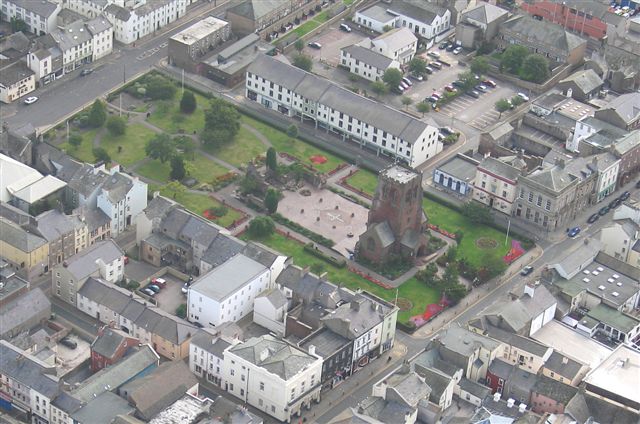
If we are hoping that his shocking death is memorialised by a grave, then we are probably out of luck. St Nicholas church was rebuilt in 1883 and then burned down in 1971. As we see from the aerial photo, the graveyard was converted to a garden, though a few gravestones survive, notably those of 'important' local families. Mildred Gale, the grandmother of George Washington is also buried in this churchyard and has a plaque in the tower. Perhaps a stone marking the humble victim of a mining tragedy might have been preserved? Anyone living in Cumbria? That's your task!
So, what next - Jane Partleton is now a widow with four children; Thomas 10, 'Dinna?' 5, William 3 and baby Margaret who is just 1. The family's subsequent survival now rests with the compensation package offered by the mine owner, Lord Lonsdale, who;

However, on 22 November 1831, the Whitehaven Herald reported that:
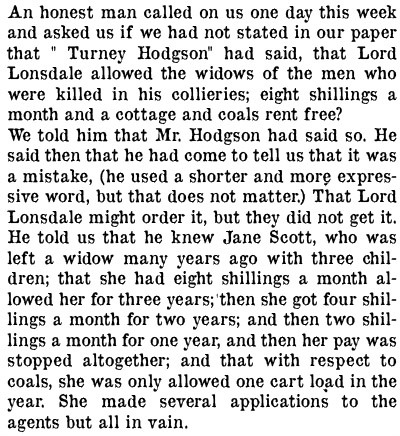
So we don't know what compensation Jane got, but we do find her a full ten years later, in the census of 1841, still living in Back Row:
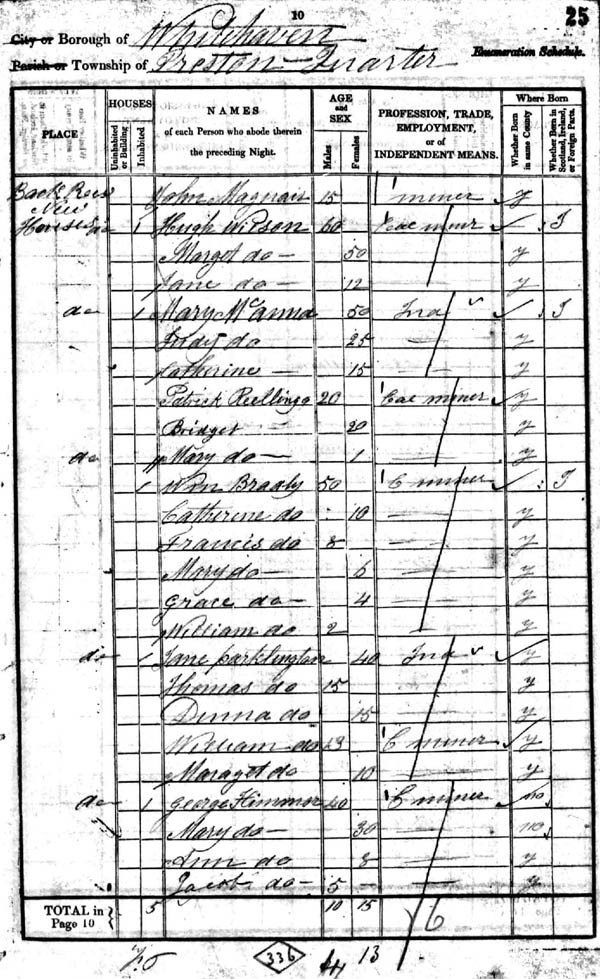
We may - for the time being - ignore the spelling 'Parklington' above; it's definitely our Jane Partleton nee Harrison. We see that she has independent means, so it appears that she is still receiving some compensation. Son William, who was just 3 when his daddy died, is now a coal miner at the tender age of 13.
It's been possible to track George and his family through censuses thanks to the amazing records held by Ancestry.co.uk. If you're inspired by this website to seek out your own British ancestors as I have done, click here.
Ten years on, the 1851 census and I can't find Jane. But William is still living in the same house in Back Row with his sister Margaret. Sharing the same house is their sister Dinah and her husband Simon Connolly whom she married in 1842. They have a little girl Catherine Connolly aged 2.
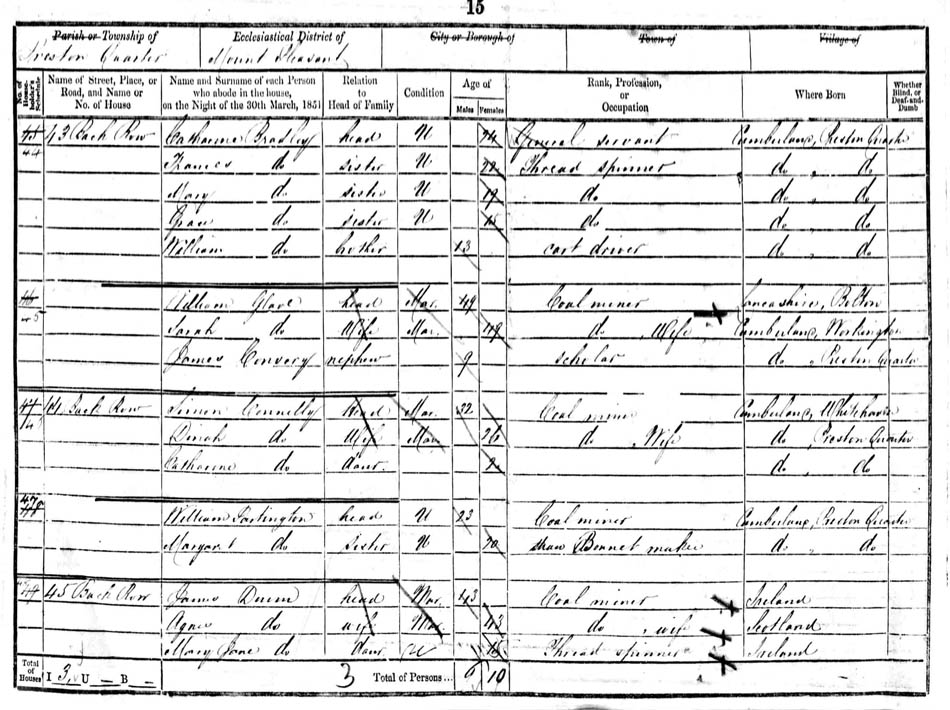
William is recorded as Partington. This is becoming rather worrisome for the family tree researcher... are we looking at the right family? But I'm quite sure, William was without doubt christened Partleton and his father was christened George Partleton and George's death was all over the newspapers as Partleton. Sister Margaret, on the other hand, as you may recall from earlier on this page, was apparently christened Partington. Here are William and Anne's christenings:
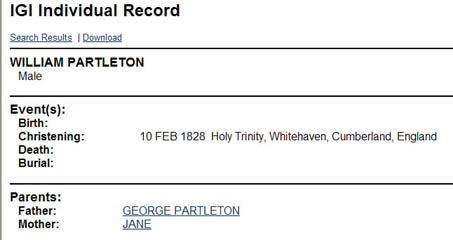
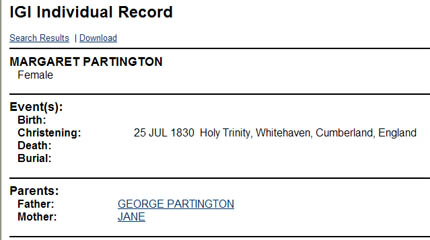
So it seems that George Partleton and his family, though they are definitely originally Partleton, may not be literate and are not overly concerned, or don't have much control over how their name is spelled.
The story of this branch of the family is screeching to a rapid end, and not a happy one. I can't find Jane, William or Thomas in the 1861 census as Partleton, Partington or anything similar. But I can find deaths for both William Partington (1855) and Thomas Partington (1857) in Whitehaven. This could be them, or they might have emigrated. Margaret married Samuel Smith in 1855 in Whitehaven.
As a postscript to this chilling tale, research in 2008 revealed the following:

,%20Tuesday,%20August%2012,%201828;%20Issue%2018381r.png)
The Edward Partleton wounded in the above article is almost certainly George's brother Edward (b1782 Whitehaven). At first I assumed that he also was injured in the same blast. But look at the date: August 1828, three years before the explosion which killed George. This is an entirely separate incident, which you will find on Edward's page in the Partleton Tree.
If you have an hour to spare, and would like to read the very interesting and detailed story of the Inquest into the death of George Partleton and 21 other miners, click here.
If you enjoyed reading this page, you are invited to 'Like' us on Facebook. Or click on the Twitter button and follow us, and we'll let you know whenever a new page is added to the Partleton Tree:
Do YOU know any more to add to this web page?... why not send us an email to partleton@yahoo.co.uk
Click here to return to the Partleton Tree 'In Their Shoes' Page for Cumberland